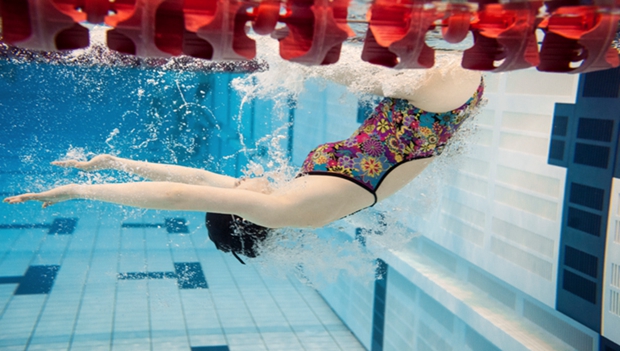
Swimmers often ask me how best to approach this seemingly simple but technically complex maneuver. Seasoned lap swimmers seem to execute the flip turn with extreme ease, while novices and many triathletes struggle with the heels-over-head motion required to change directions while lap swimming.
Swimming Events Near You
Those even less fortunate end up with a nose and mouth full of water!
Some triathletes may think that learning a flip turn is a waste of time because there is no need for one in their open-water swims. However, knowing how to execute a flip turn will ensure a better workout because every time you pause or hang on the wall between laps, you are giving your body a little break.
This rest stop will not be available to you in a triathlon or open-water swim, and you may find yourself tiring out in the race with no idea why. Add up all those split-second poolside breaks and you will find that swimming a mile in open water is a lot tougher than swimming a mile broken up into 25-yard segments.
So a flip turn eliminates these tiny rest stops from your workout and, over time, develops more continuous-swimming endurance.
While putting a step-by-step flip turn breakdown in writing without the help of several pictures or a live demonstration was challenging to say the least, what follows is a game try. It just may get you on the right track, and with luck, you'll have the basics down enough to impress your less-enlightened lane mates (the ones who clutch the wall at the end of each lap and laboriously rotate themselves 180 degrees before launching into their next length!).
The Big T
Ever notice the black line at the bottom of your pool's lane? While some new age architect might try convincing you that this tiled design is some form of aquatic feng shui, its really just a navigational tool; a 12-inch wide highway beckoning you to swim in a straight line.
At either end of each black line there's a shorter perpendicular line interrupting it. This T serves a very important purpose; it signals that there's a wall about two feet away. It also alerts a swimmer that it's time to begin the first movements of their flip turn.
As your face crosses the T, keep your left arm by your side while your right arm enters its last stroke before the wall (this is assuming you are right-handed). Tuck your chin into your chest and, as your right arm is finishing the underwater recovery of its last stroke (so that it's down by your hip, like the left arm), dolphin kick your legs for a final propulsive push. This last thrust should catapult you further downward into your flip.
Remember, you've already started to turn downward as you tucked your chin into your chest while your right arm was following through on its underwater pull. Allow your body to follow, tucking into a ball while trailing your head's lead.
The Right Angle
At this point, your backside should be out of the water with your legs about to breach. Keep in mind you are doing a somersault--no different than when you were a kid on the lawn.


